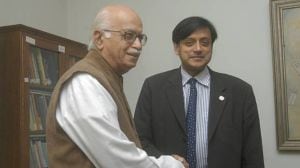Chandigarh master plan screaming against flyovers, why go for it, asks CJ
Advocate Tanu Bedi says the UT administration has not implemented any of the suggestions given to decongest the city
 The planners clearly foresaw increasing traffic and yet decided against flyovers, prescribing other remedies. (Source: File)
The planners clearly foresaw increasing traffic and yet decided against flyovers, prescribing other remedies. (Source: File)“The Chandigarh master plan is literally screaming against flyovers. How are you going for it?” Chief Justice Sheel Nagu remarked on Tuesday as the Punjab and Haryana High Court heard arguments on the proposed flyover at Dakshin Marg.
Assisting the Bench, advocate Tanu Bedi opposed the proposal, contending that the 2015 Chandigarh Master Plan expressly discourages construction of flyovers and instead envisions the city as pedestrian- and cycle-friendly green city.
Appearing before the division bench of Chief Justice Sheel Nagu and Justice Sanjiv Berry, Bedi argued that the UT administration had ignored several recommendations of the master plan and undertaken no new traffic study before deciding on the project near Tribune Chowk. “The only response they are giving is that there is congestion and that this spot is outside Phase I, so they can build a flyover. But the master plan already provides detailed alternatives that have never been implemented,” she said.
Bedi took the Bench through multiple chapters of the 2015 Master Plan, including Chapter 12 on traffic and transportation, which listed measures such as developing a ring road, creating bypasses, strengthening public transport, and preventing “ribbon development” along highways to manage congestion. The plan, she noted, envisaged an increase in the share of public transport from 16% to 70% by 2041 and setting up Bus Rapid Transit System (BRTS) corridors along Dakshin Marg.
Citing data from the plan, Bedi pointed out that in 2015 the vehicular load ratio on Dakshin Marg was 0.7, significantly lower than Madhya Marg’s 1.2 or Udyog Path’s 1.1. “They have not done any new study. There is no rational basis for choosing Dakshin Marg for a flyover when other roads are more congested,” she submitted.
Responding to the court, UT standing counsel Amit Jhanji said, “Two aspects need to be seen. One, whether heritage considerations were examined. Two, the master plan only makes a recommendation; it does not impose a prohibition on flyovers.”
Bedi argued that the administration could not bypass the master plan, which was notified in 2015 following directions of the High Court in a public interest litigation. “If they wish to amend it, there is a procedure. It has not been followed,” she said.
Referring to portions of the plan that state Chandigarh should be “promoted as a pedestrian and cycle-friendly city” and that “underpasses, not flyovers, are the last resort,” Bedi stressed that V2 roads such as Dakshin Marg are classified as “arterial roads” central to the city’s design and heritage. “In Chandigarh’s body, these arterial roads are like veins. Any construction against the plan will choke the city and destroy its character,” she told the court.
She also referred to Chapter 19 of the plan on heritage, noting that even elements such as street furniture, signage, and lighting along V2 roads are to conform to the city’s heritage character. “A flyover is a much bigger change,” she said, adding that roads themselves are recognised as heritage components.
Bedi concluded that the phrase “not recommended” in the master plan carried substantive intent. “It is not a casual suggestion but part of the soul of the master plan. The planners clearly foresaw increasing traffic and yet decided against flyovers, prescribing other remedies,” she said.
The hearing will continue later this week.



- 01
- 02
- 03
- 04
- 05




























